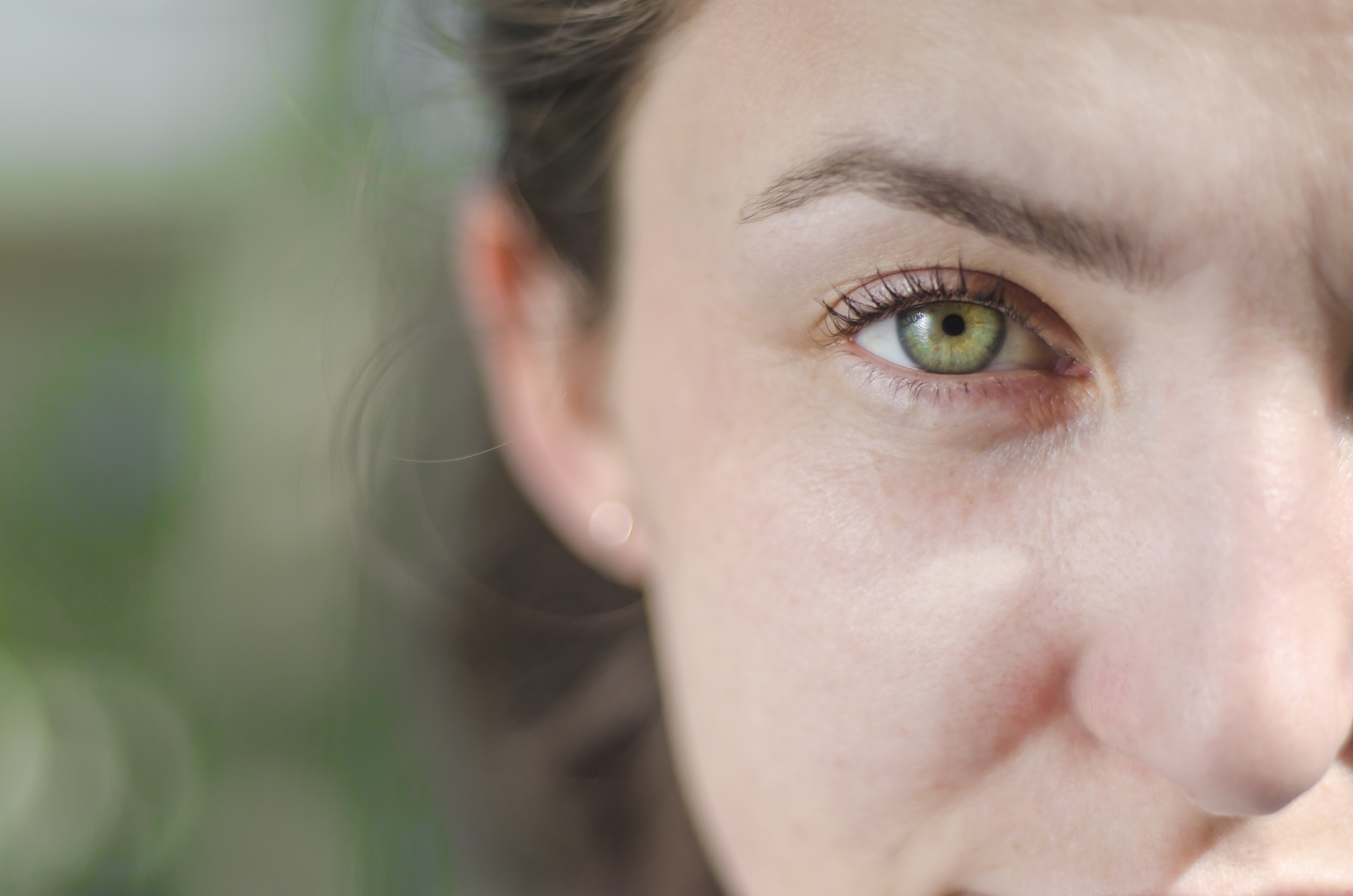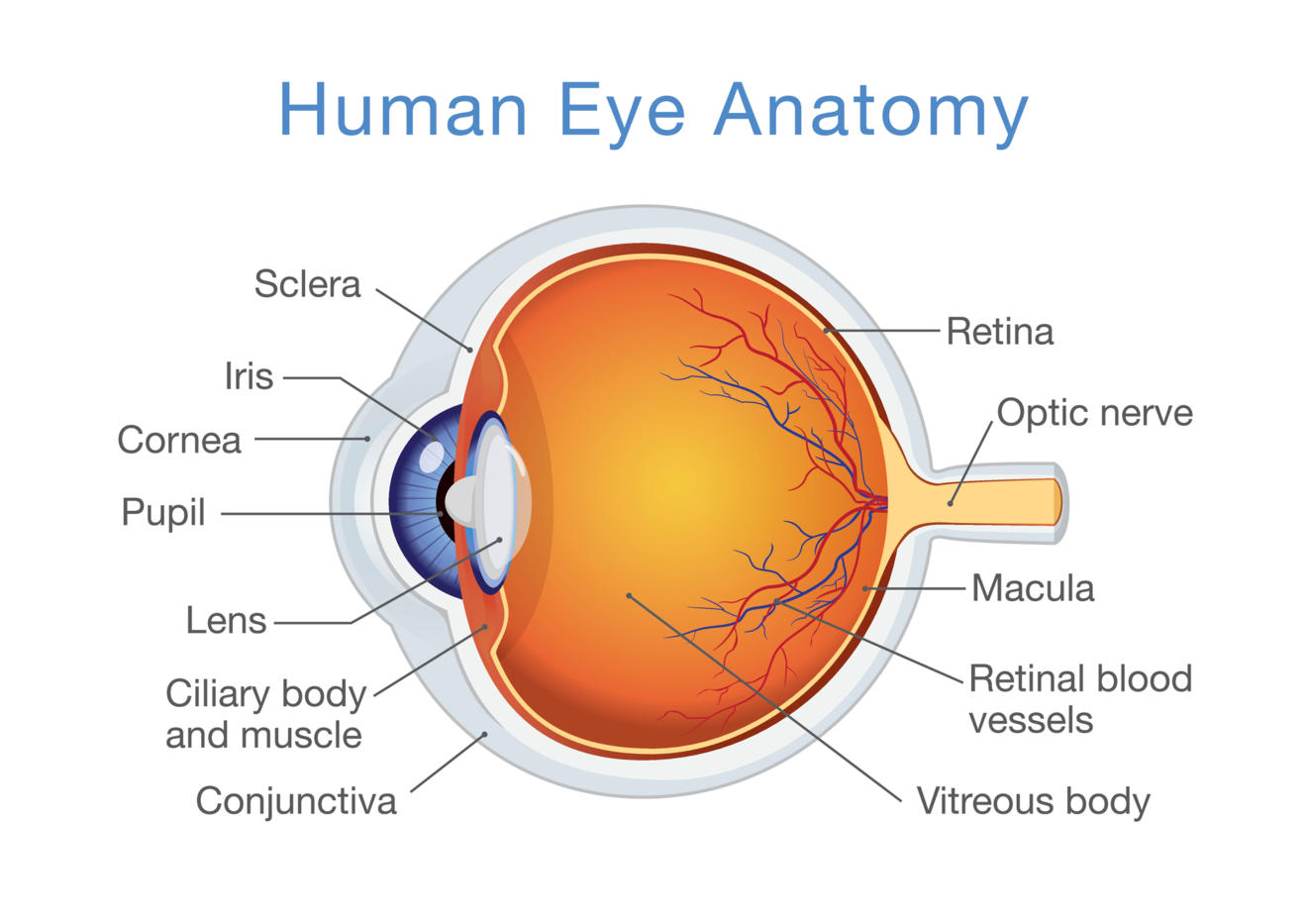Our dossiers on vision
Eye and vision

Anatomy of the eye
Sight is the most widely used of the 5 senses.
The eye is the main organ of the visual system, capturing the images we see and transforming them into an electrical signal to the optic nerve.
This signal is then "translated" by the brain, in the visual cortex, which returns the processed image to us, enabling us to interpret our environment.
The eye is a globe about 25mm in diameter, weighing approximately 8 grams.
It is made up of a multitude of organs:
The ciliary body is the anterior part of the choroid, to which the lens is attached by a series of fibers called Zinn's zonule. It plays a fundamental role in the secretion of aqueous humor and accommodation of vision.
The iris is a disk-shaped membrane perforated at its center by the pupil. It is the colored part of the eye, whose color depends on the thickness of the lamellae of the eye's epithelium. The iris is light when the lamellae are thin, and dark when the lamellae are thick.
The contraction or dilation of the iris is a physiological reflex to adapt to light. In bright light, the pupil is small (miosis); in dim light, the pupil becomes large in order to capture as much light as possible (mydriasis).
The cornea is a transparent tissue on the front of the eye that transmits light to the lens and retina. It is composed of 5 layers (Epithelium, Bowman's membrane, Stroma, Descemet's membrane, Endothelium), is not vascularized (which explains why it doesn't bleed), but is highly innervated. This explains its great sensitivity, and the "corneal reflex" that manifests itself in the sudden blinking of the eyelids to protect the eyes in case of need. The cornea is constantly nourished by tears and aqueous humor.
The aqueous humor is a transparent liquid that supplies nutrients to the cornea and lens. Its role is to maintain intraocular pressure and the shape of the eyeball.
The sclera is a white, highly resistant membrane. It forms the "white" of the eye.
The choroid, a richly vascularized tissue of the eyeball, is the eye's nourishing membrane.
The retina is a thin membrane that covers a large part of the inner surface of the eyeball. Sensitive to light, it is made up of photoreceptors (cones and rods) and neurons that transmit electrical signals to the brain. The central retina contains the macula and fovea. It is vascularized by the central retinal artery and vein.
The optic nerve, the second cranial nerve, begins at the optic disc and sends visual information from the retina to the brain.
Within the bony cavity of the orbit, the eyeball is held in place and set in motion by the oculomotor muscles:
- 4 rectus muscles
- 2 oblique muscles
The rectus muscles :
- The inferior rectus muscle orients the eye downwards: lowering the gaze.
- The superior rectus muscle directs the eye upwards: raising the gaze.
- The internal rectus muscle directs the eye towards the nose: adduction.
- The external rectus muscle directs the eye towards the temple: abduction.
Oblique muscles:
- Inferior oblique: This is the shortest of the oculomotor muscles. It orients the eye towards the temple and elevates the gaze.
- Superior oblique: This is the longest of the oculomotor muscles. It orients the eye towards the nose and lowers the gaze.
The lacrimal system
The lacrimal system comprises all the organs involved in the production, distribution and secretion of tears.
The continuous circulation of tears prevents dehydration of the cornea (nourishing role) and eliminates debris and impurities in the eye.
Tears are produced by the lacrimal gland located under the upper eyelid. They spread over the front surface of the eye, where they are distributed by the blinking of the eyelids. The blink also allows them to flow out through the lacrimal point in the inner corner of the eyelids.
Tears are then evacuated via the lacrimal canaliculus, then the nasolacrimal duct, and end their journey in the nasal cavity.
Tears are 98% water, along with various other substances (electrolytes, glucose, urea, proteins, etc.).
Vision
It is the light rays present in our environment that enable vision, and the various organs of the eye are at the origin of a set of light-perception mechanisms.
Light is first perceived by the iris, which adapts the pupil size accordingly.
The light then passes through the ocular media, i.e. the crystalline lens and vitreous body, which must be transparent for the light to be properly transmitted.
It then reaches the retina and its photoreceptor cells:
cones, mainly located in the central retina (macula), are responsible for color vision, shape and detail, and are associated with daylight vision.
rods, mainly located in the peripheral retina, are much more sensitive to light, are responsible for seeing contours and movement, and are associated with low-light vision.
This set of organs transforms light into electrical signals, which are then sent to the brain via the optic nerve, where the image is interpreted.
Nutrition and vision
A healthy diet is important for eye health, and certain nutrients play a key role:
- Vitamin A (a fat-soluble vitamin) and beta-carotene (a pro-vitamin A that the body converts into vitamin A) are important for the retina and its cells.
Liver, whole milk and butter, for example, contain vitamin A. Beta-carotene is found in fruits and vegetables such as sweet potatoes, carrots, pumpkins, spinach, broccoli...
- Vitamin C (antioxidant) helps combat cellular aging and is thought to play a role in the prevention of age-related eye diseases such as Age-related Macular Degeneration (AMD) and Cataracts.
Citrus fruits, kiwi fruit, green leafy vegetables and cabbage provide vitamin C.
- Lutein and zeaxanthin are pigments that act as antioxidants in the lens and macula, protecting against aging and associated eye diseases.
These nutrients are found in dark-colored fruits and vegetables, such as kale, spinach, broccoli, orange peppers, kiwis, green leafy vegetables and egg yolks.
- Omega-3 polyunsaturated fatty acids are a major constituent of cell membranes and nerve cells, particularly in the retina. They also contribute to eye hydration and prevent dry eyes. They also play an important role in preventing Age-related Macular Degeneration (AMD).
These fatty acids are found in fish such as salmon, sardines and mackerel, and in omega-3-rich vegetable oils (rapeseed, linseed, walnuts).

